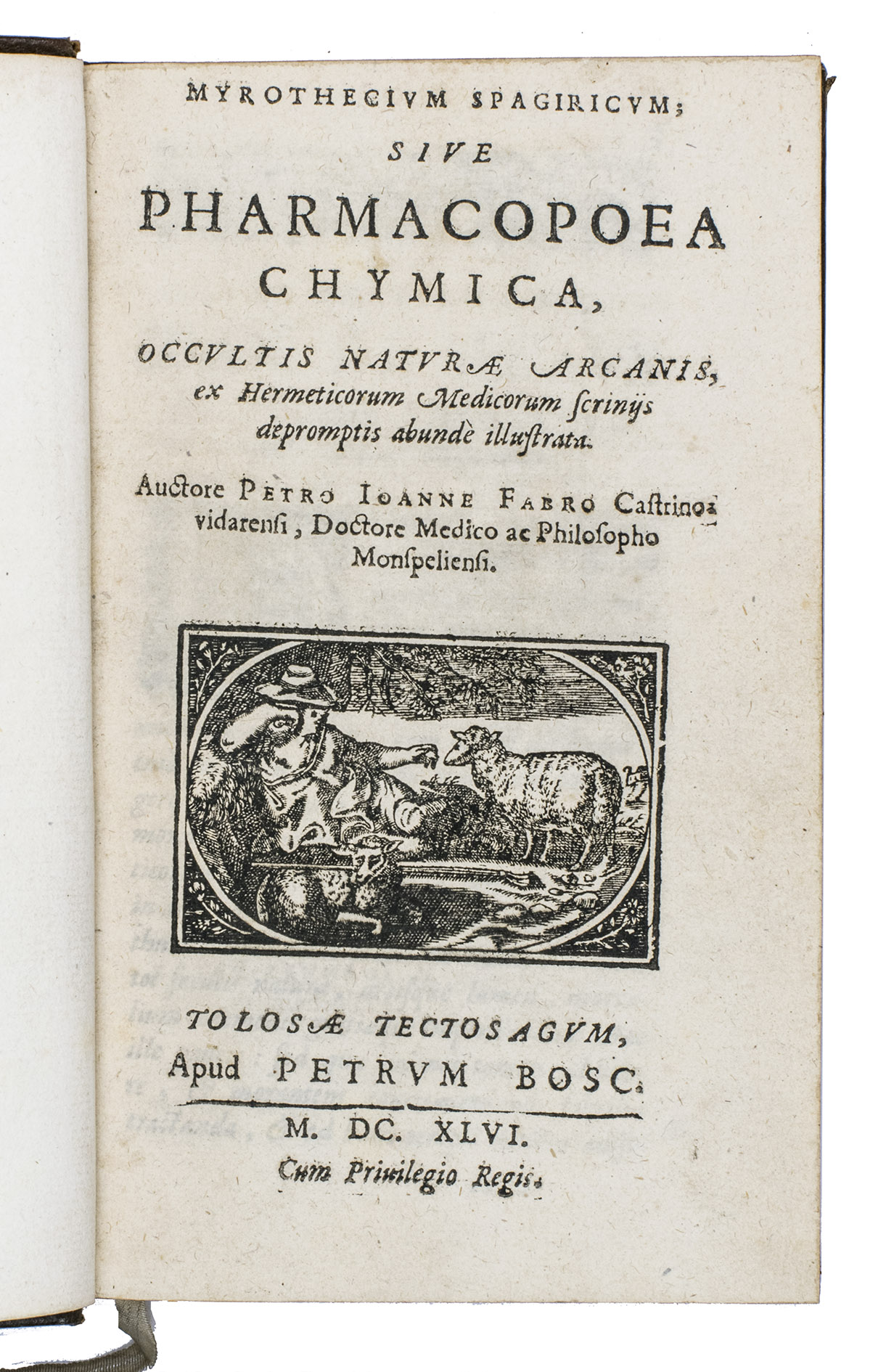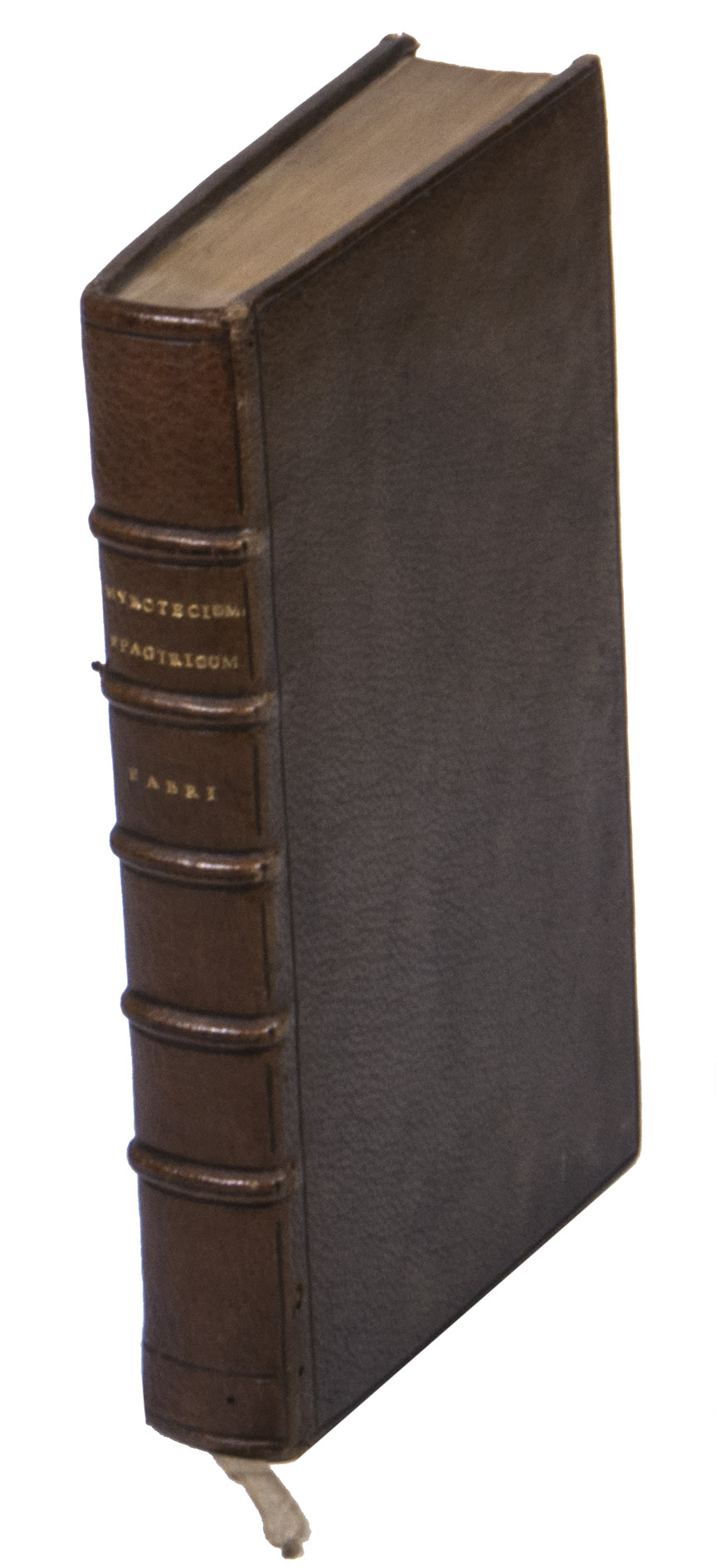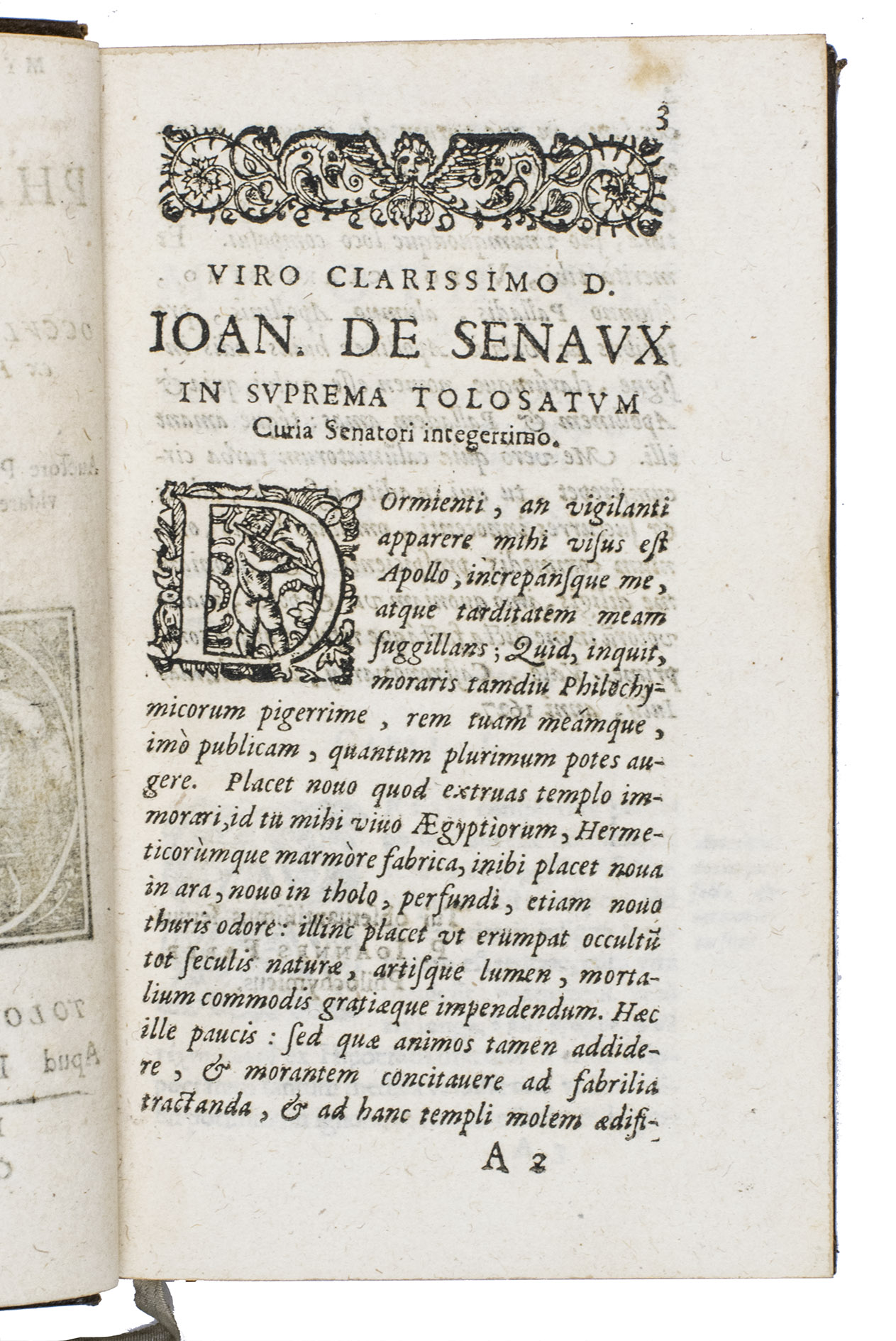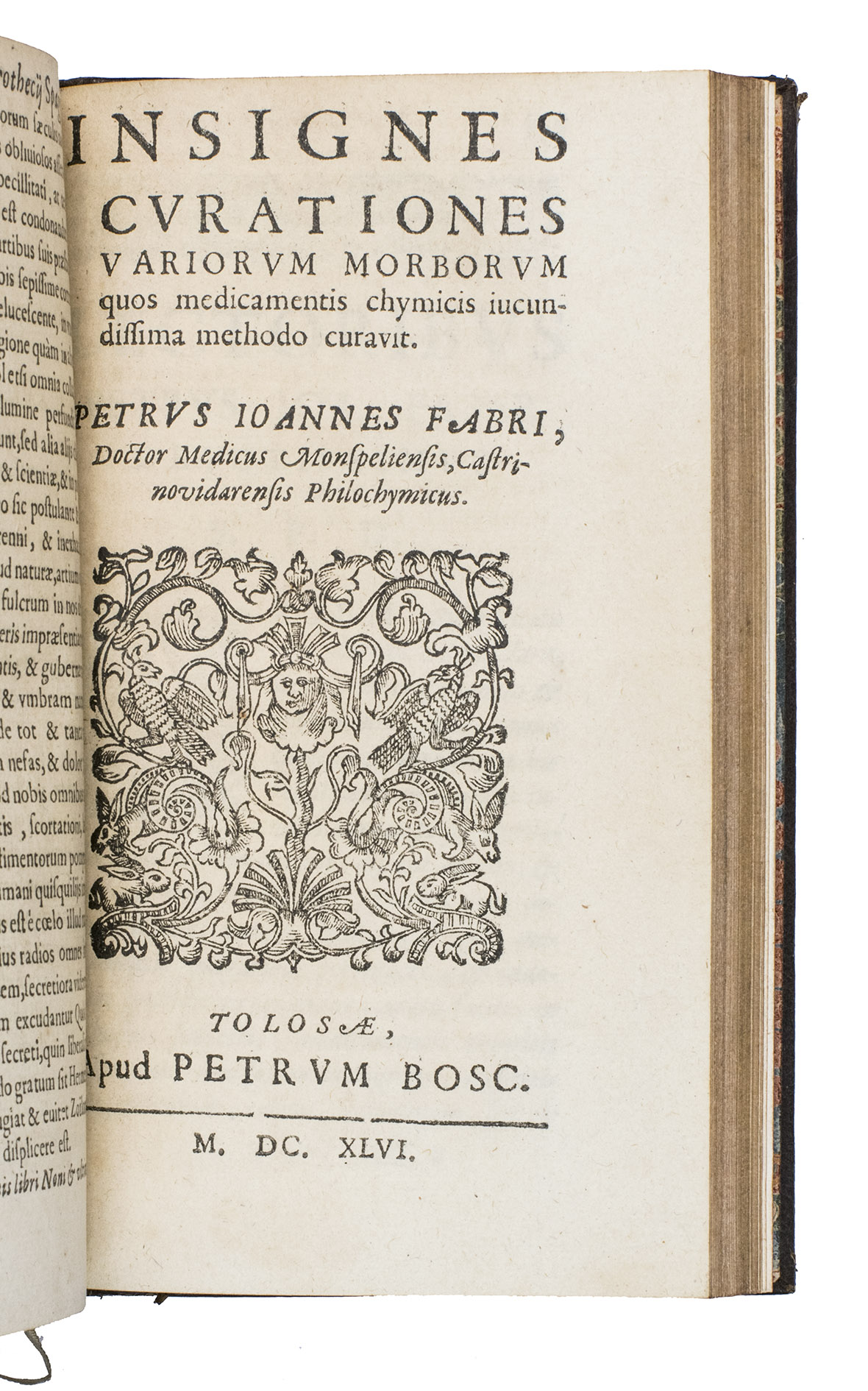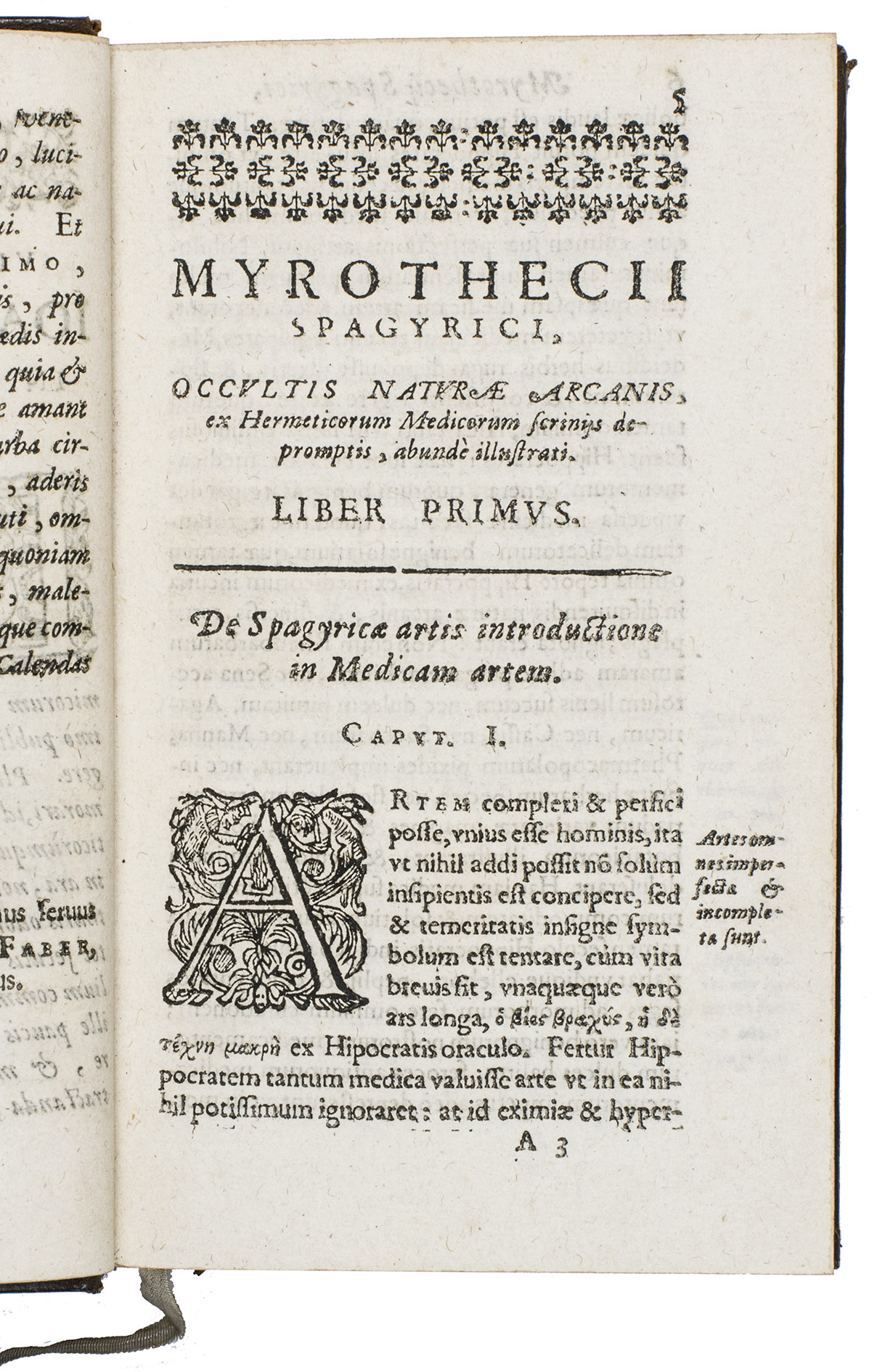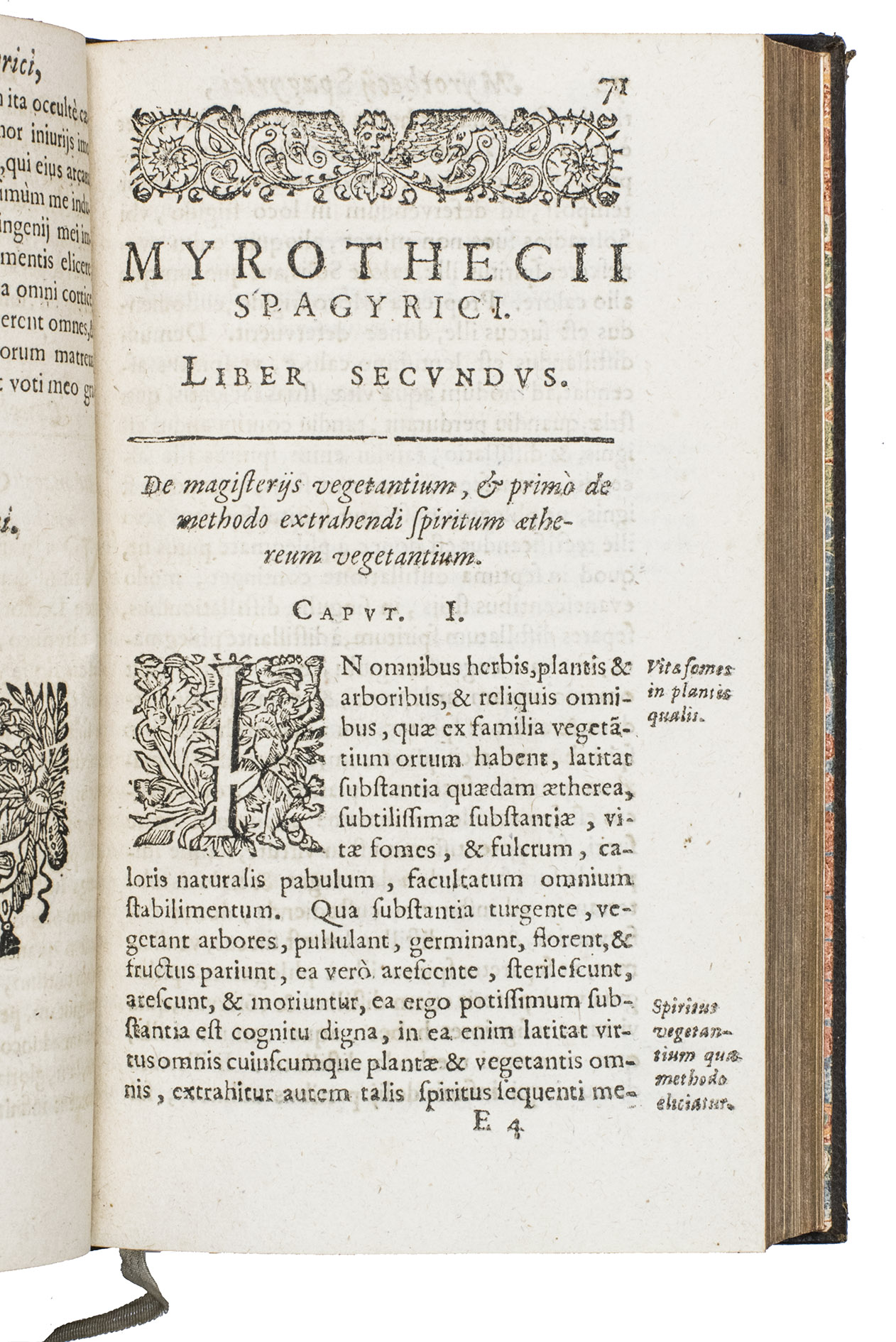FABRE, Pierre Jean.
Myrothecium spagiricum; sive pharmacopoea chymica, occultis naturae arcanis, ex Hermeticorum medicorum scrinijs depromptis abundè illustrata...
Toulouse, Pierre Bosc, 1646. 2 parts in 1 volume. 8vo. With a woodcut vignette on the title page and the divisional title page of part two, 9 woodcut headpieces, 4 headpieces built up from typographical ornaments, a woodcut tailpiece, and numerous decorated woodcut initials. 20th-century blind-tooled brown morocco. 448, [22], [2 blank] pp.
€ 7,500
Exceptionally scarce work on spagyric medicine, with the often missing second part included. It is known that Isaac Newton (1642-1726/27) owned a copy of it, as Pierre Jean Fabre (1588-1658) was one of his favourite alchemical authors. The work, and especially the present edition, is very scarce. We have only been able to find one other copy in sales records of the past hundred years. It has also only been recorded in four libraries worldwide, and is not mentioned in most of the relevant reference works.
The work is a collection of spagyric remedies and formulas. Spagyric medicine was developed by Paracelsus (1493-1541) and his followers, and flourished until the middle of the 17th century. The method was thought to improve the efficacy of medicine by separating it into its primordial elements and then recombining them. This was done via alchemical processes such as fermentation, distillation and extraction. The present work contains recipes that follow this method. It is divided in two parts. The first contains various remedies. It explains how to create and use the quintessence of human blood to prevent ulcers, leprosy and paralysis; the quintessence of the human skull to cure epilepsy, migraines and vertigo; and the quintessence of urine to protect oneself against contracting the plague. The second part contains case studies of patients Fabre had treated.
The corners of the boards are slightly scuffed, the leather on the front and back is slightly scratched, with small wormholes in the front joint. The lower outer corner of the leaves is slightly creased throughout, a small tear in the lower margin of page 157, not affecting the text, the upper and inner margins have been cut somewhat short, with occasional annotations in the margins. Otherwise in very good condition. Krivatsy 3795; Partington II, p. 181; USTC 6810512 (2 copies); WorldCat 14312222, 1068184285 (4 copies); cf. Caillet II, 3766 (other ed.); Duveen, p. 201, 202 (other eds.); Ferguson I, p. 260 (mentions other ed.); Rosenthal 283 (other ed.); not in Brüning.
Related Subjects:
